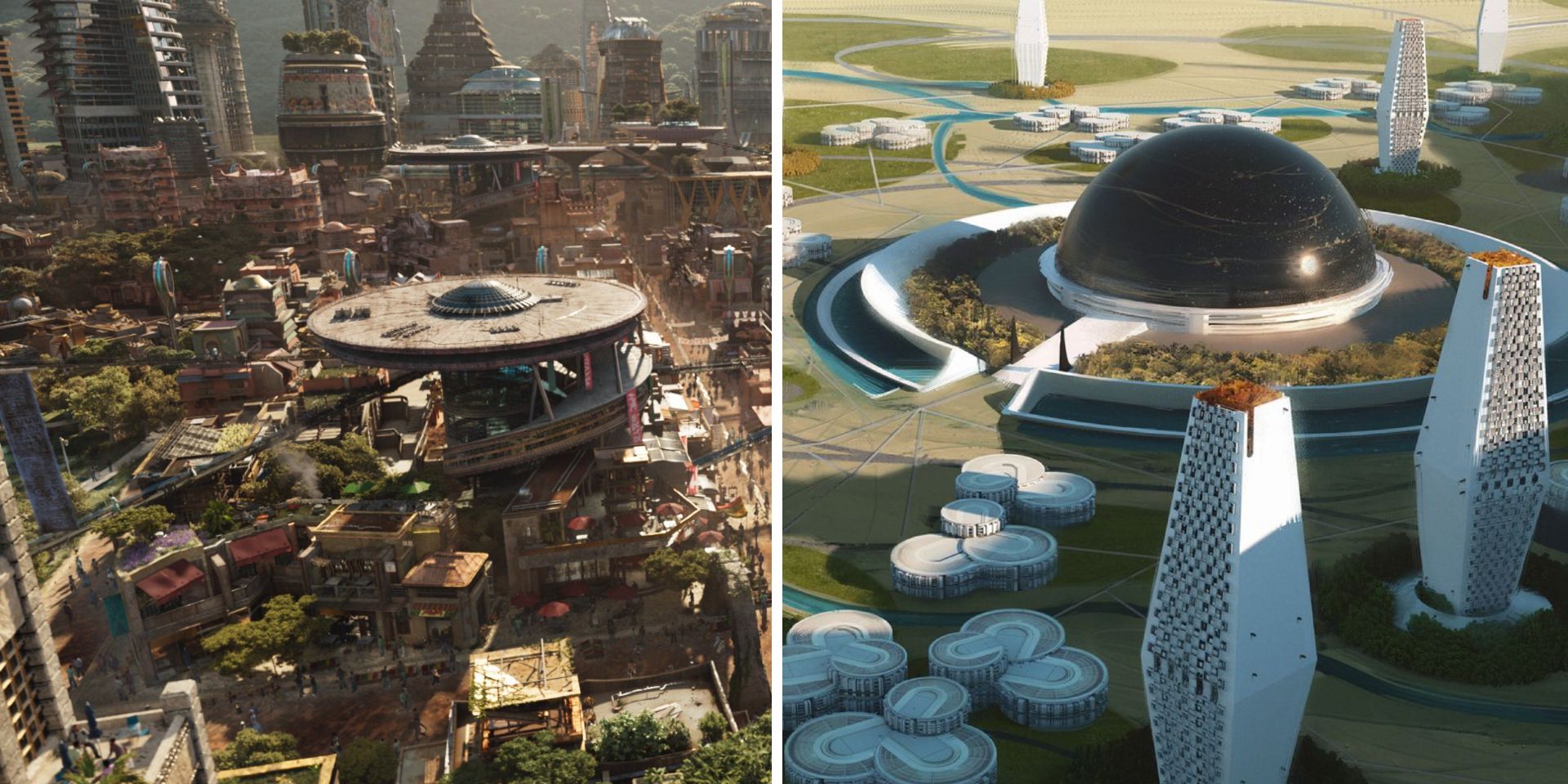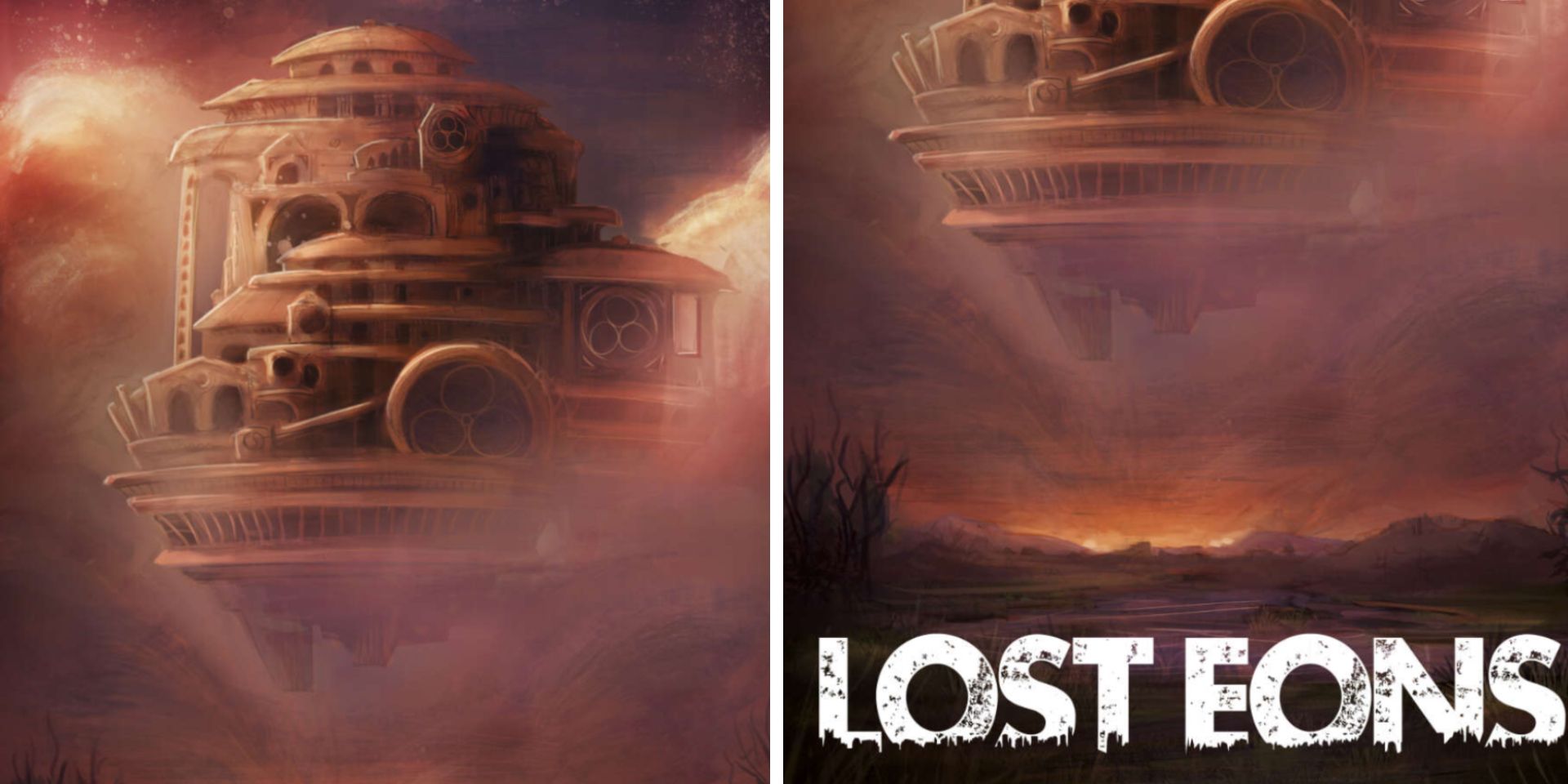
The Marvel Cinematic Universe movie Black Panther, set in the high-tech, artistically vibrant city-state of Wakanda, is one of the most well-known pop-culture representations of Afrofuturism and Solarpunk. Solarpunk is a science fiction sub-genre and visual aesthetic centered around depicting futuristic societies that are advanced, colorful, environmentally sustainable, and liberated from both oppression and want. Gamers who love the aesthetics of Solarpunk and want to explore its themes through the act of roleplaying will very much enjoy the following tabletop RPGs, each set in a futuristic, flawed, yet hopeful utopia built to be in harmony with nature and filled with (mostly non-violent) opportunities for adventure.
The vast majority of sci-fi/space opera/fantasy tabletop RPGs - and most works of fiction in general - take place in worlds, lands, and times that are exciting, dramatic, and turbulent, the better to challenge protagonists and push them to grow. To create these dramatic settings, most storytellers and game designers fill their constructed fantasy or science fiction worlds with large amounts of violence, danger, oppression, and other "evils" their "good" characters must fight if they're to survive. Fantasy/sci-fi RPGs such as The Witcher 3 or Cyberpunk 2077 from CD Projekt RED are frequently labeled as "escapist" narratives, stories where gamers can live out fantasies of empowerment, even though their dark, doomed fantastical settings are places no person would ever want to escape to. Works of Solarpunk fiction, in contrast, consciously take a more optimistic, hopeful approach in their depictions of the future, dreaming up messy, complex, flawed, evolving, and genuinely pleasant societies like the Black Panther movie's gleaming metropolis of Wakanda.
Is it possible to create a utopia not propped up by some dark secret or sin, and what would such as society look like? Can writers and role-players tell entertaining, adventurous stories without the dramatic props of violent conflict or injustice? What sort of culture, traditions, art, song, and lifestyles would these Utopias have? The science fantasy tabletop RPGs listed below each try to answer these questions in their own ways, giving their players narrative roleplaying rules and fleshed-out settings that can be used to tell stories about people in vibrant cultures who dream up and enact new ways of living. Many of these RPGs also immerse their players in the aesthetic and flair distinct to solarpunk fiction and art - advanced technology blended with Art Nouveau architecture, bustling cities full of verdant greenery, stained-glass mosaics, Afrofuturist fashion a-la Black Panther, and solar panels built into everything.

LOST EONS is a self-described "sci-fantasy triptych" RPG collection available on itch.io. It fuses the Solarpunk genre of fiction with the genre of post-apocalyptic fantasy seen in video games such as Breath of the Wild. Player characters in LOST EONS are the strange, altered descendants of humanity who emerge from underground Havens (akin to the shelters in the Fallout games) into a far-future Earth with an eco-system transformed in the wake of a massive climate catastrophe.
The game books for LOST EONS contain several tables and charts full of world-building details tied to the numbers and suits of playing cards. This lets both players and Game Masters draw cards from a deck to randomly generate character concepts, ecosystems, and Havens with aesthetics drawn from Black Panther's Wakanda and other works of Solarpunk fiction. The free-form magic system of LOST EONS is centered around the channeling of a mysterious "Essence" permeating the world, an energy that progressively mutates those who wield it.

The Transition Year is an RPG "hack" of the rules used in The Quiet Year, a tabletop mapmaking game about an isolated village community trying to survive a post-apocalyptic world. The Transition Year, like The Quiet Year, has a gameplay cycle centered around drawing playing cards from four different decks, each individual card symbolizing a specific kind of event or dilemma. Unlike The Quiet Year, The Transition Year, published by the Affinity Games Collective on itch.io, takes place in a wake of a revolution and tells the stories of a group of people trying to build a post-capitalist, non-exploitive society within the ruins of the old.
A session of The Transition Year, lasting roughly three to four hours, is a narrative conversation between players who work to construct a landscape and community while imagining new ways of living, organizing, creating, resolving disputes, and is ultimately a tabletop RPG about surviving. By default, the communities envisioned in The Transition Year are localized and intimate. But it's more than possible to use this mapmaking game to create grand hidden Solarpunk cities like those seen in Black Panther.

The Arcology World Solarpunk adventure RPG uses the "Powered By The Apocalypse" roleplaying system to tell ardently anti-capitalist stories about de-centralized communities in a far-future Earth full of lush ecosystems and strange animals mutated by genetic engineering. Player characters in Arcology World (currently sold on itch.io) are the residents and members of the diverse, colorful Solarpunk communities within this game's setting. PC goals are generally centered around solving problems or rectifying lingering injustices in their societies using teamwork, trust, personal connections, and the classic anti-authoritarian strategy of Mutual Aid. Character Playbooks in the Arcology World system are built around constructive archetypes such as Doctors, Mediators, or Zoologists, while the tabletop RPG's basic Moves de-emphasize violence or coercion to achieve one's goals.

Into The Motherlands, recently funded on Kickstarter, is an upcoming science-fiction roleplaying game being developed by I Need Diverse Games, a Chicago-based game studio dedicated to promoting/publishing tabletop game content made by and for marginalized peoples. The Afrofuturist world-building core to Into The Motherlands draws heavily from real events in the life of Mansa Musa, an incredibly rich medieval West African king who once sent two naval expeditions across the Atlantic Ocean. In the setting of Into The Motherlands, Musa's expedition was transported by a strange space-warping phenomenon to a distant extrasolar planet with its own ecosystem and indigenous life-forms.
Centuries later, highly advanced civilizations, families, and communities in this tabletop RPG descended from the West African cultures of this naval expedition thrive on their adopted home-world of Musalia, living in symbiosis with the native ecology and raising up Solarpunk metropolises in the style of Wakanda from Black Panther. The Into The Motherlands RPG is currently available to Kickstarter backers in Quickstart form; the full release will have a character creation system centered around a PCs skills, cultures, and values, a range of playable species such as humans, plant people, androids, intelligent symbiotes, and hyena people, and a set of character Professions with evocative titles such as "Spine-Ripper" or "Light Bringer."
Sources: itch.io/Arcology World, itch.io/The Transition Year, itch.io/LOST EONS, Kickstarter
Comments
Post a Comment